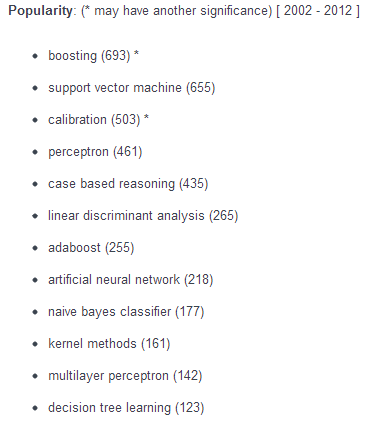Notes:
A classifier is an algorithm used in machine learning to predict the class or category of a given input. Classifiers are used in many different fields, including natural language processing, image recognition, and speech recognition. In a dialog system, a classifier may be used to interpret the user’s input and determine the appropriate response. For example, a classifier could be trained on a dataset of user inputs and corresponding responses, and then be used to predict the appropriate response for a new input. This can help the dialog system generate more relevant and personalized responses to the user’s queries. Classifiers can also be used in other parts of a dialog system, such as for intent classification (determining the user’s intended meaning or goal) or for sentiment analysis (determining the user’s emotional state or attitude).
These terms refer to different types of classifiers, which are algorithms used in machine learning to predict the class or category of a given input.
- A Bayes or Bayesian classifier is a type of probabilistic classifier that uses Bayes’ theorem to make predictions. It makes predictions by calculating the probability of each possible class given the input data, and then selecting the class with the highest probability.
- A maximum-entropy or maxent classifier is a type of classifier that seeks to find the maximum entropy solution, which is the solution that is most uncertain or random. This type of classifier is often used in natural language processing, where it can be used to model the uncertainty of language data.
- A multi-layer-perceptron (MLP) classifier is a type of artificial neural network that consists of multiple layers of interconnected nodes. It is a supervised learning algorithm, which means that it is trained using labeled examples, and can be used to make predictions for new inputs.
- A nearest-neighbor (NN) classifier is a type of instance-based learning algorithm, which means that it makes predictions based on the similarity of new inputs to examples in its training data. It typically uses a distance metric, such as Euclidean distance, to measure the similarity between inputs.
- A strong classifier is a classifier that makes accurate predictions with high confidence. It is typically more complex and may require more data to train than a weak classifier.
- A support-vector-machine (SVM) classifier is a type of linear classifier that uses support vector machines to make predictions. It works by finding the hyperplane that maximally separates the different classes in the training data.
- A weak classifier is a classifier that makes less accurate predictions, but may be easier to train and may require less data. It is often used in ensemble methods, where multiple weak classifiers are combined to form a stronger overall classifier.
See also:
Classification Algorithms In Dialog Systems
 |
 |